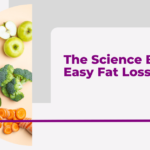When it comes to burning fat and losing weight, two popular workout styles dominate the conversation: HIIT (High-Intensity Interval Training) and steady-state cardio. But which one is more effective?
This guide breaks down the science, benefits, and drawbacks of each—helping you choose the best workout for your weight loss goals.

What Is HIIT?
HIIT involves short bursts of intense exercise followed by brief rest periods. A typical HIIT session lasts 15-30 minutes and alternates between max-effort moves (like sprints or burpees) and recovery.
Benefits of HIIT for Weight Loss
✅ Burns more calories in less time (afterburn effect = continued calorie burn post-workout)
✅ Preserves muscle mass (unlike long cardio sessions that may break down muscle)
✅ Boosts metabolism (EPOC effect keeps fat-burning elevated for hours)
✅ Improves insulin sensitivity (helps regulate blood sugar, reducing fat storage)
Drawbacks of HIIT
❌ High injury risk (poor form + max effort can strain joints)
❌ Not ideal for beginners (requires baseline fitness level)
❌ Can be mentally taxing (hard to sustain long-term)
What Is Steady-State Cardio?
Steady-state cardio (SSC) involves moderate-intensity exercise at a consistent pace for 30+ minutes (e.g., jogging, cycling, or swimming).
Benefits of Cardio for Weight Loss
✅ Great for beginners (easier to start and maintain)
✅ Low injury risk (gentler on joints than HIIT)
✅ Improves endurance (better for long-distance runners, cyclists)
✅ Relaxing & meditative (some find it less stressful than HIIT)
Drawbacks of Cardio
❌ Takes longer (requires 45+ minutes for significant calorie burn)
❌ Can lead to muscle loss (if overdone without strength training)
❌ Plateaus faster (body adapts, requiring longer sessions for same results)
HIIT vs Cardio: Which Burns More Fat?
| Factor | HIIT | Steady-State Cardio |
|---|---|---|
| Calories Burned (Per Session) | High (especially post-workout) | Moderate |
| Time Efficiency | 15-30 mins | 45+ mins |
| Muscle Retention | Better (strength-focused) | Lower (can break down muscle) |
| Fat Loss Long-Term | More effective (EPOC effect) | Slower (unless paired with diet) |
| Sustainability | Harder to maintain daily | Easier to stick with |
Science-Backed Verdict:
- HIIT is superior for fat loss due to its metabolic boost and efficiency.
- Cardio is better for endurance and those who prefer low-impact workouts.
Best Choice for Your Goals
Pick HIIT If You…
- Want maximum fat burn in minimal time
- Enjoy challenging, fast-paced workouts
- Have some fitness experience (to avoid injury)
Pick Cardio If You…
- Are a beginner or prefer low-intensity exercise
- Need a stress-relieving, meditative workout
- Train for endurance sports (marathons, cycling)
Ideal Combo?
For best results, mix both:
- 2-3 HIIT sessions/week (fat burning)
- 2-3 steady-state cardio sessions (recovery & endurance)
Sample Weekly Workout Plan
| Day | Workout |
|---|---|
| Monday | HIIT (20 mins) |
| Tuesday | Steady-State Cardio (45-min jog) |
| Wednesday | Strength Training |
| Thursday | HIIT (15 mins) |
| Friday | Cycling (30 mins) |
| Saturday | Rest or Yoga |
| Sunday | Long Walk (active recovery) |
Final Thoughts
Both HIIT and cardio aid weight loss, but HIIT is more efficient for burning fat in less time. However, the best workout is the one you’ll stick with—consistency matters most!









